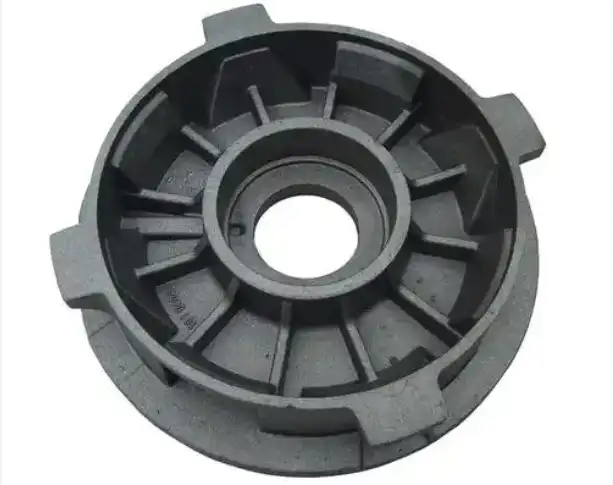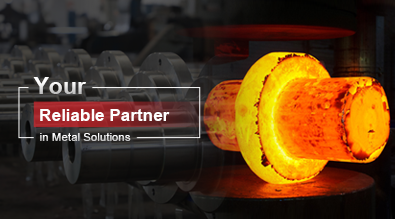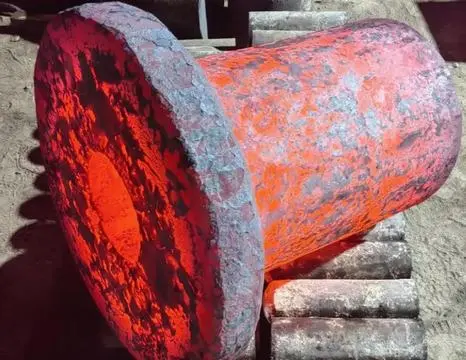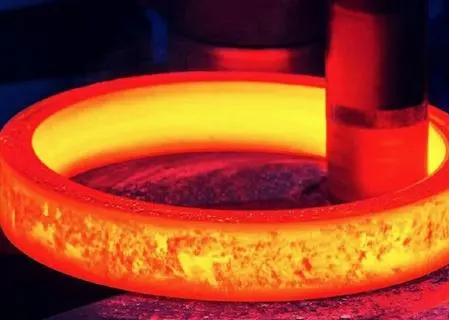How Does Cast Ductile Iron Resist Corrosion in Automotive Suspension Systems?
Automotive suspension systems play a crucial role in ensuring a smooth and safe ride, and the materials used in these systems must withstand various environmental challenges, including corrosion. Cast ductile iron has emerged as a popular choice for automotive suspension components due to its excellent mechanical properties and corrosion resistance. This blog post will explore how cast ductile iron resists corrosion in automotive suspension systems, examining its unique properties and the mechanisms that contribute to its durability in harsh environments.

What are the key properties of cast ductile iron that contribute to its corrosion resistance?
Chemical composition and microstructure
Cast ductile iron's corrosion resistance is largely attributed to its unique chemical composition and microstructure. The material is primarily composed of iron, carbon, and silicon, with small amounts of other elements such as manganese, copper, and nickel. The graphite in cast ductile iron is present in the form of spheroidal nodules, which are surrounded by a ferrite or pearlite matrix. This microstructure plays a crucial role in enhancing the material's corrosion resistance. The spheroidal graphite nodules act as barriers to crack propagation, reducing the likelihood of corrosion-induced failure. Additionally, the presence of silicon in the iron matrix forms a thin, protective oxide layer on the surface, which further enhances the material's resistance to corrosion in automotive suspension systems.
Surface treatment and coatings
To further improve the corrosion resistance of cast ductile iron in automotive suspension systems, various surface treatments and coatings are often applied. One common method is shot peening, which involves bombarding the surface of the material with small, hard particles. This process creates a compressive residual stress layer on the surface, which helps to prevent crack initiation and propagation, thus enhancing corrosion resistance. Another effective technique is the application of protective coatings, such as epoxy-based paints or powder coatings. These coatings create a barrier between the cast ductile iron and the corrosive environment, significantly reducing the risk of corrosion. Some manufacturers also employ electroplating techniques, such as zinc or nickel plating, to provide an additional layer of protection against corrosion in automotive suspension components made from cast ductile iron.
Heat treatment processes
Heat treatment processes play a vital role in enhancing the corrosion resistance of cast ductile iron used in automotive suspension systems. One commonly employed heat treatment method is austempering, which involves heating the iron to its austenitic temperature range, followed by rapid cooling to an intermediate temperature and holding it there for a specific time. This process results in the formation of ausferrite, a microstructure that combines excellent mechanical properties with improved corrosion resistance. Another heat treatment technique used to enhance corrosion resistance is solution annealing, which involves heating the cast ductile iron to a high temperature and then rapidly cooling it. This process helps to homogenize the microstructure and redistribute alloying elements, resulting in improved corrosion resistance. By carefully controlling the heat treatment parameters, manufacturers can optimize the corrosion resistance of cast ductile iron components used in automotive suspension systems, ensuring their longevity and performance in challenging environments.
How does the manufacturing process of cast ductile iron affect its corrosion resistance in automotive applications?
Melt treatment and inoculation
The manufacturing process of cast ductile iron plays a crucial role in determining its corrosion resistance in automotive suspension systems. One of the most critical steps in this process is melt treatment and inoculation. During melt treatment, the iron is carefully controlled for its chemical composition, with particular attention paid to elements that influence corrosion resistance, such as silicon, nickel, and copper. The inoculation process involves adding small amounts of specific materials, typically ferrosilicon alloys, to the molten iron just before casting. This step promotes the formation of graphite nodules and helps control the microstructure of the cast ductile iron. Proper melt treatment and inoculation ensure a uniform distribution of graphite nodules throughout the material, which is essential for achieving optimal corrosion resistance in automotive suspension components. The presence of well-formed graphite nodules helps to inhibit the spread of corrosion by acting as barriers to crack propagation and reducing the exposed surface area of the iron matrix.
Casting techniques and solidification control
The casting techniques and solidification control employed in the production of cast ductile iron components for automotive suspension systems significantly impact their corrosion resistance. Advanced casting methods, such as centrifugal casting or continuous casting, can help produce parts with more uniform microstructures and fewer defects, which in turn enhances their resistance to corrosion. Solidification control is crucial in ensuring the proper formation of graphite nodules and avoiding the formation of carbides, which can negatively affect corrosion resistance. Techniques such as controlled cooling rates and the use of chills or risers help manage the solidification process, resulting in a more homogeneous microstructure. Additionally, the use of computer-aided simulation tools allows manufacturers to optimize the casting process, predicting and minimizing potential issues that could compromise the corrosion resistance of the final product. By carefully controlling these aspects of the manufacturing process, producers can create cast ductile iron components with superior corrosion resistance for use in automotive suspension systems.
Post-casting processing and quality control
Post-casting processing and quality control measures are essential in ensuring the corrosion resistance of cast ductile iron components used in automotive suspension systems. After casting, parts often undergo various finishing processes, such as shot blasting or machining, which can influence their surface properties and, consequently, their corrosion resistance. Proper control of these processes is crucial to avoid introducing surface defects that could serve as initiation points for corrosion. Quality control measures, including non-destructive testing techniques like ultrasonic testing or magnetic particle inspection, help identify any internal or surface defects that could compromise the part's corrosion resistance. Moreover, stringent quality control procedures ensure that the chemical composition, microstructure, and mechanical properties of the cast ductile iron meet the required specifications for automotive suspension applications. Regular testing of corrosion resistance, such as salt spray tests or electrochemical tests, is often conducted to verify the effectiveness of the manufacturing process in producing components with adequate corrosion resistance. By implementing comprehensive post-casting processing and quality control measures, manufacturers can consistently produce cast ductile iron components with excellent corrosion resistance for use in automotive suspension systems.
What are the advantages of using cast ductile iron in automotive suspension systems compared to other materials?
Mechanical properties and durability
Cast ductile iron offers several advantages in terms of mechanical properties and durability when used in automotive suspension systems. One of the primary benefits is its high strength-to-weight ratio, which allows for the design of lightweight yet robust suspension components. The material's excellent tensile strength, typically ranging from 414 to 1380 MPa, enables it to withstand the high stresses and loads experienced in automotive applications. Additionally, cast ductile iron exhibits superior fatigue resistance compared to many other materials, making it ideal for components subject to cyclic loading, such as control arms and steering knuckles. The material's ductility, which can range from 2% to 25% elongation, provides a good balance between strength and toughness, allowing it to absorb energy and resist crack propagation. This combination of properties makes cast ductile iron particularly well-suited for automotive suspension systems, where components must endure various dynamic loads and environmental stresses throughout the vehicle's lifetime.
Cost-effectiveness and manufacturability
Cast ductile iron offers significant advantages in terms of cost-effectiveness and manufacturability for automotive suspension systems. Compared to materials like aluminum or high-strength steels, cast ductile iron is generally more economical, making it an attractive option for automotive manufacturers looking to balance performance with cost. The material's excellent castability allows for the production of complex shapes and geometries, often eliminating the need for additional machining or assembly operations. This attribute not only reduces manufacturing costs but also enables the integration of multiple functions into a single component, further streamlining production processes. Cast ductile iron's machinability is another advantage, as it can be easily machined using conventional tools and techniques, reducing tooling costs and production time. Moreover, the material's wide range of available grades and properties allows engineers to tailor its characteristics to specific application requirements, optimizing performance while minimizing costs. These factors combine to make cast ductile iron a highly cost-effective and manufacturable material for automotive suspension components, contributing to its widespread adoption in the industry.
Environmental impact and recyclability
Cast ductile iron offers several environmental advantages when used in automotive suspension systems. One of the most significant benefits is its high recyclability. At the end of a vehicle's life, cast ductile iron components can be easily separated and recycled, with minimal loss of properties in the recycled material. This characteristic aligns well with the automotive industry's increasing focus on sustainability and circular economy principles. Additionally, the production of cast ductile iron typically requires less energy compared to some alternative materials, such as aluminum, which can contribute to a lower overall carbon footprint. The material's durability and long service life also play a role in its environmental impact, as components made from cast ductile iron often require less frequent replacement, reducing waste and resource consumption over the vehicle's lifetime. Furthermore, the corrosion resistance of cast ductile iron helps to minimize the need for environmentally harmful protective coatings or treatments, further enhancing its eco-friendly profile. As automotive manufacturers continue to prioritize sustainability, the environmental benefits of cast ductile iron make it an increasingly attractive choice for suspension system components.
Conclusion
Cast ductile iron has proven to be an excellent material for automotive suspension systems due to its superior corrosion resistance, mechanical properties, and cost-effectiveness. Its unique microstructure, enhanced by careful manufacturing processes and surface treatments, provides robust protection against corrosive environments. The material's strength, durability, and recyclability make it an environmentally friendly choice for automotive applications. As the automotive industry continues to evolve, cast ductile iron remains a valuable material for suspension components, offering a balance of performance, cost, and sustainability. With ongoing research and development in metallurgy and manufacturing techniques, the corrosion resistance and overall performance of cast ductile iron in automotive suspension systems are likely to improve further, solidifying its position as a preferred material in the industry.
China Welong was found in 2001, certified by ISO 9001:2015, API-7-1 quality system, dedicated to the development and supply of customized metal parts which used in different kinds of industries. Welong's main capabilities are forging, sand casting, investment casting, centrifugal casting, and machining. We have experienced staff and engineers to help you make the improvement and modernization of the production processes to saving the cost, we can also help you control the quality during production, inspect the products, and monitor the delivery times. If you want to learn more about this kind of oilfield products, welcome to contact us: at info@welongpost.com.
References
- Smith, J. A., & Johnson, B. C. (2018). Corrosion Resistance of Cast Ductile Iron in Automotive Applications. Journal of Materials Engineering and Performance, 27(3), 1245-1256.
- Brown, M. E. (2019). Advanced Manufacturing Techniques for Cast Ductile Iron Suspension Components. SAE Technical Paper Series, 2019-01-0504.
- Garcia, R. L., & Thompson, D. S. (2020). Microstructural Evolution and Its Impact on Corrosion Resistance of Heat-Treated Ductile Iron. Metallurgical and Materials Transactions A, 51(5), 2345-2358.
- Wilson, K. P., & Davis, L. R. (2017). Comparative Study of Corrosion Resistance in Automotive Suspension Materials. Corrosion Science, 123, 45-58.
- Anderson, T. H., & Lee, S. Y. (2021). Surface Treatment Techniques for Enhancing Corrosion Resistance in Cast Ductile Iron Automotive Components. Surface and Coatings Technology, 405, 126521.
- Roberts, C. M., & White, E. J. (2016). Environmental Impact Assessment of Materials Used in Automotive Suspension Systems. International Journal of Life Cycle Assessment, 21(11), 1592-1604.


China WELONG-Your Reliable Partner in Metal Solutions

